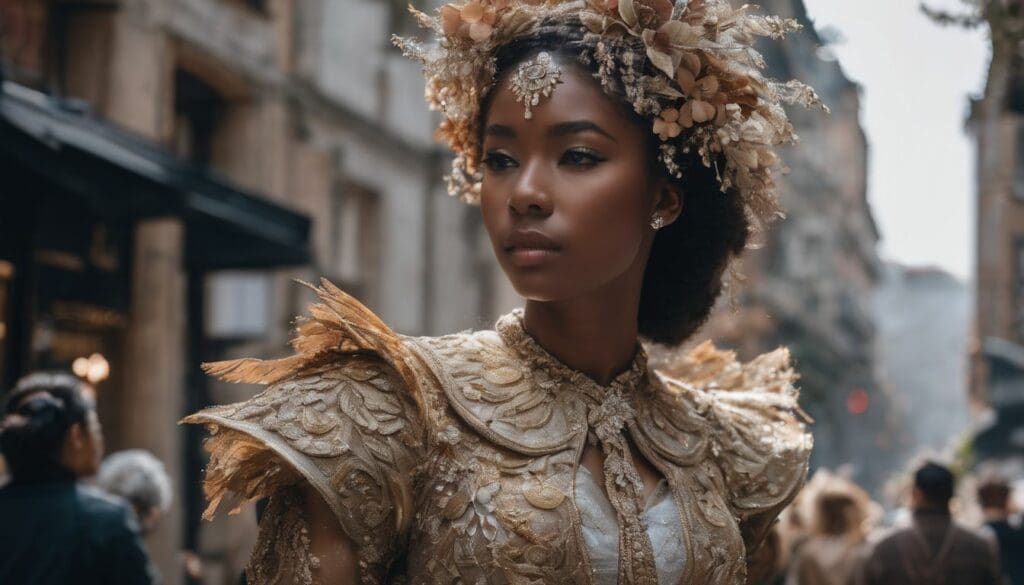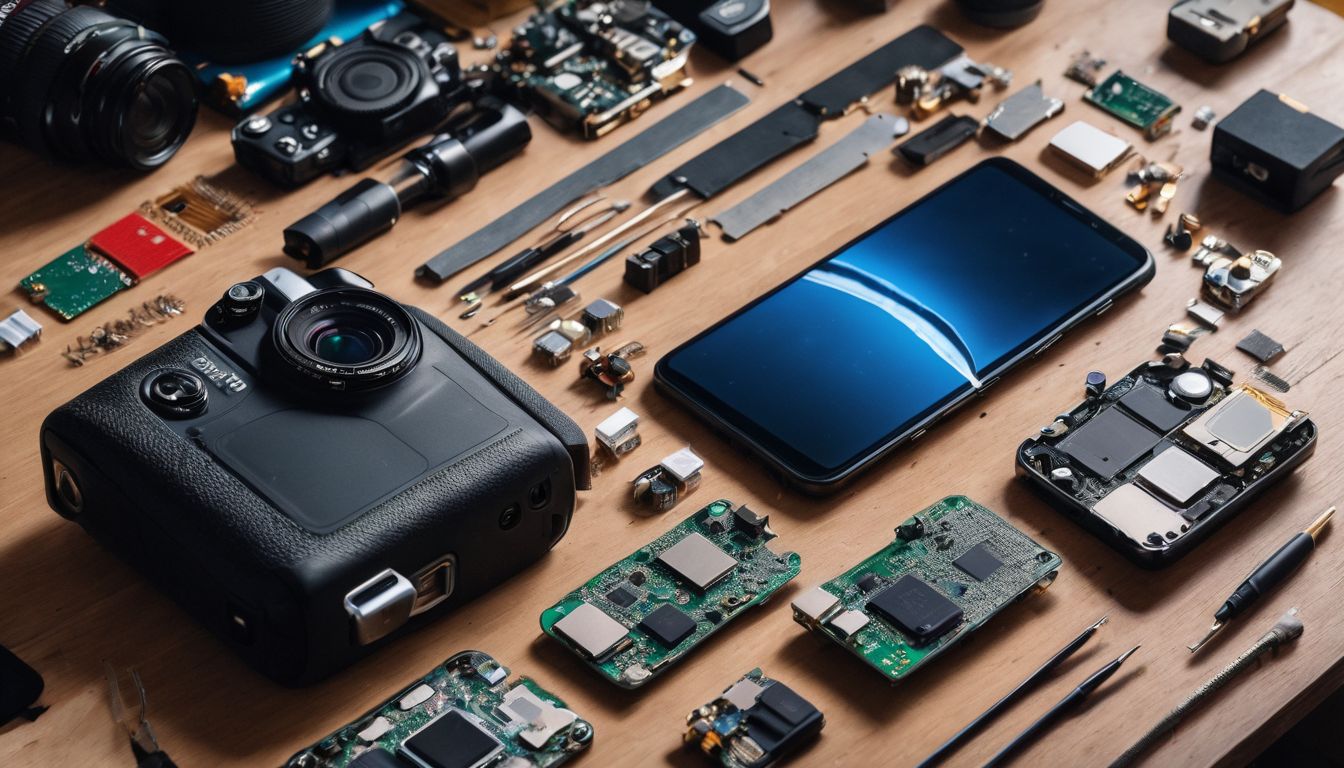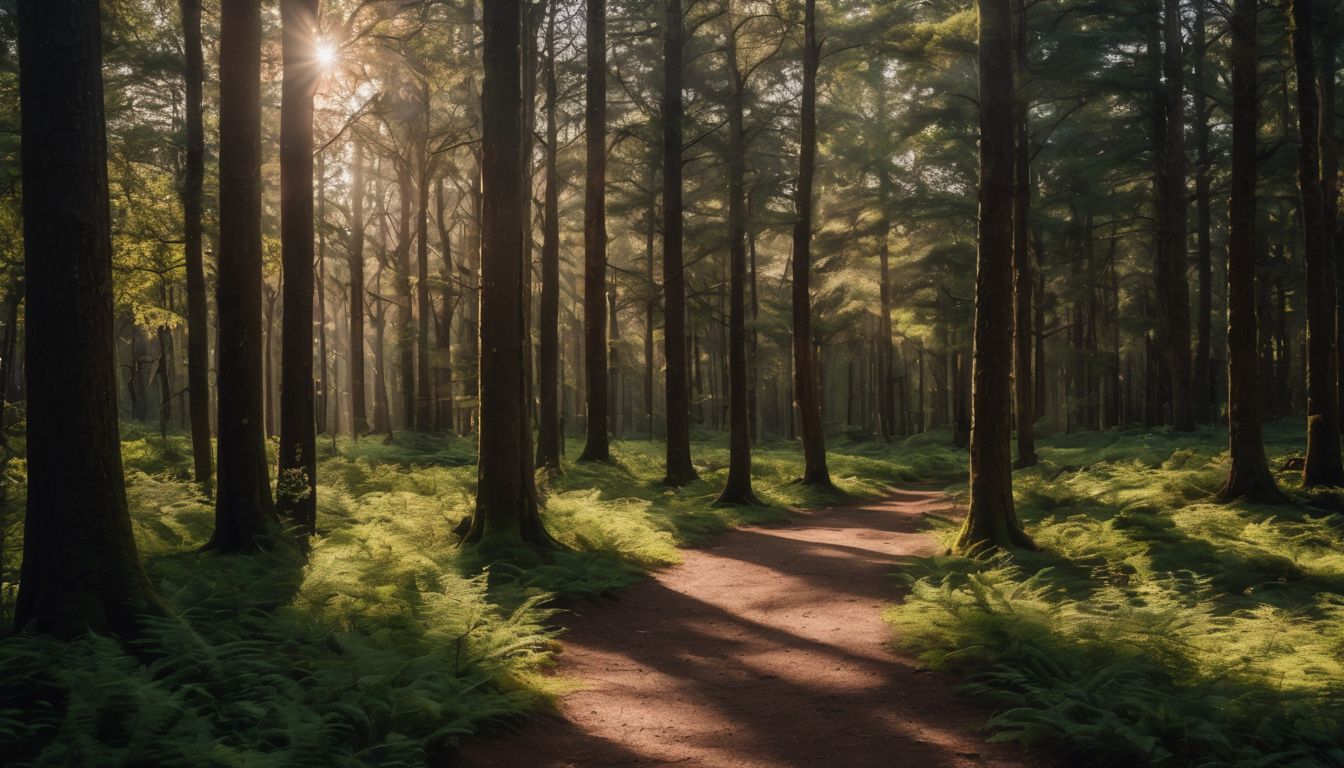We’ve all experienced the feeling of reluctance as we bid farewell to an item, questioning whether it still held value. Like you, we’ve contemplated this conundrum and found that upcycling is a wonderfully inventive solution, especially in light of the staggering 2 billion tons of waste produced globally each year.
Our article is set to escort you through the fascinating realm of upcycling, demonstrating how to transform perceived rubbish into genuine treasures. So come along—let us embrace this journey where what once was disregarded becomes utterly coveted!
Key Takeaways
- Upcycling is a creative solution to the global issue of waste, offering a new life and purpose to discarded items by transforming them into valuable products.
- Artists and innovators repurpose everyday materials into art, reducing environmental impact by lessening the amount of waste sent to landfills.
- By embracing upcycled art in our daily lives, we partake in sustainability efforts while inspiring others through eco-friendly practices and innovative designs.
- Upcycling serves as both an artistic expression and a form of environmental activism that contributes to addressing significant challenges in waste management.
- Joining the upcycling movement supports resource conservation and showcases the potential for creative reuse within communities around the world.
The Difference Between Upcycling and Recycling
Upcycling takes the pieces we might throw away and gives them a new role that’s often better than their original purpose. Imagine taking an old gaming console, one you’d normally toss out, and turning it into a stunning piece of art or a functional piece of furniture for your game room.
This isn’t just creative recycling; it’s upcycling – giving old items a value upgrade instead of breaking them down.
Recycling does its part by converting waste into something usable again, like taking stacks of thrown-out game manuals and transforming them into paper products. However, the magic of upcycling lies in its ability to infuse discarded materials with innovation and artistic flair—often with less energy than traditional recycling requires.
Now let’s dive deeper into the world of upcycled artistry where trash becomes treasure beyond measure.
Unleashing the Power of Upcycled Art
Seeing the potential in discarded materials and repurposing them allows for the creation of unique and innovative art pieces, redefining the way we view waste. Upcycled art not only showcases creativity but also brings attention to the importance of environmental sustainability.
Seeing potential in discarded materials
We recognise the potential in discarded materials to become valuable resources through upcycling. This innovative approach breathes new life into items that would otherwise end up as waste in landfills or incinerators, reducing environmental impact and promoting sustainability.
Upcycling transforms discarded materials into desirable products, ranging from fashion items crafted from plastic bottles to furniture made from reclaimed wood. The vital role of upcycled art in waste transformation is evident in its ability to create beautiful and functional pieces while addressing the challenges of resource scarcity and environmental degradation.
Crafting masterpieces from repurposed materials showcases the creativity and innovation driving the upcycling revolution. By harnessing creative reuse, we unlock sustainable solutions for waste reduction and resource conservation while inspiring change through eco-friendly practices.
Repurposing and redefining materials
Upcycling goes beyond recycling by creatively transforming discarded materials into valuable and useful products. This innovative approach breathes new life into unwanted items, offering a sustainable solution to the growing issue of waste management.
Through upcycling, we can revitalise rubbish and turn it into eco-friendly solutions, thereby reducing the amount of waste sent to landfills and incinerators. With over 2 billion tonnes of waste generated annually, upcycling presents an opportunity for resource utilisation and profitable repurposing while addressing environmental challenges.
Crafting masterpieces from discarded materials not only fosters environmental awareness but also inspires change through creativity. By embracing eco-friendly practices and implementing upcycled art in everyday life, we are contributing to the upcycling revolution and unlocking the power of resource conservation and creative innovation.
Crafting masterpieces
Crafting masterpieces involves seeing the potential in discarded materials and redefining them into stunning works of art. Artists use their creativity to repurpose items that would have otherwise ended up in landfills, breathing new life into them through innovative upcycling techniques.
By transforming waste materials into valuable products, such as fashion items or home décor, upcycled art not only reduces environmental impact but also showcases the beauty of sustainability.
This process of turning trash into treasure is a testament to the transformative power of upcycling, inspiring individuals to embrace eco-friendly solutions and harness their creativity for positive change.
The Impact of Upcycled Art on Environmental Advocacy
Upcycled art addresses waste management challenges, fosters environmental awareness, and inspires change through creativity. Read on to discover how discarded materials are transformed into eco-friendly solutions!
Addressing waste management challenges
Addressing waste management challenges involves finding innovative solutions to the 2 billion tons of waste generated annually. Upcycling plays a crucial role in this, as it transforms discarded materials into valuable products, reducing the amount of waste sent to landfills and incinerators.
This creative reuse not only helps address environmental issues but also inspires a shift towards sustainable living, offering an impactful solution to the growing problem of waste management.
Fostering environmental awareness
Upcycled art can effectively raise awareness about environmental issues and inspire change through creativity. It showcases the transformation of discarded materials into valuable products, emphasising the importance of reducing waste to protect our planet.
By creating stunning artworks from everyday refuse, upcycling artists highlight the potential in items regarded as useless, fostering a deeper understanding of resource conservation and sustainable living practices.
This approach not only addresses waste management challenges but also encourages individuals to embrace eco-friendly solutions in their daily lives, contributing to a more environmentally conscious society.
The power of upcycled art lies in its ability to provoke thought and inspire action towards a more sustainable future. Through innovative creations that repurpose unwanted materials, it encourages individuals to reconsider their consumption habits and become proactive participants in environmental preservation efforts.
Inspiring change through creativity
Artists around the world are leading the charge in inspiring change through creativity by transforming discarded materials into eco-friendly masterpieces. They are breathing new life into trash, addressing waste management challenges, and fostering environmental awareness through their innovative upcycled art.
This visionary approach is not only redefining our perception of waste but also encouraging a shift towards sustainable living. With their imaginative creations, artists are demonstrating the transformative power of upcycling and calling for a collective commitment to turn trash into treasure.
Artists Leading the Way
Visionaries of change are at the forefront of embracing upcycled art, leading the way in the creative reimagining of discarded materials. These artists are setting a powerful example by embodying eco-friendly practices and inspiring others to join the revolution.
Visionaries of change
Artists are leading the way in the upcycling revolution, showcasing the potential of discarded materials through their creative vision. These innovators are reshaping our perception of waste by repurposing it into remarkable pieces of art.
Their eco-friendly practices inspire environmental awareness and encourage others to embrace sustainable living. Through their transformative work, they are fostering a sense of responsibility towards waste management and resource conservation within communities.
Embracing upcycled art in everyday life is not just a trend but a necessary step towards reducing our environmental impact. The artists pioneering this movement lead by example, demonstrating that trash is not simply garbage when approached with creativity and innovation.
Embracing eco-friendly practices
Visionaries of change have ignited a global movement, inspiring individuals to embrace eco-friendly practices through upcycling. Converting rubbish into treasures is more than just a trend; it’s an essential step towards sustainable living.
Embracing eco-friendly practices through upcycling not only reduces the burden on landfills and incinerators but also empowers us to actively participate in environmental conservation.
By adopting upcycled art in our everyday lives, we contribute to the revitalisation of discarded materials, fostering resource conservation and creative innovation for a greener future.
Embracing Upcycled Art in Everyday Life
Embracing upcycled art in everyday life is not just about transforming trash into treasure, but also about making a personal commitment to sustainability. The power of upcycling lies in our ability to redefine waste and breathe new life into discarded materials for a greener future.
Personal journey towards sustainability
Embracing upcycled art in our everyday lives has been a transformative journey towards sustainability. We have witnessed the power of repurposing and redefining materials, from transforming old furniture into unique pieces to giving new life to discarded textiles.
It’s not just about reducing waste but also about creating something beautiful and useful out of what was once considered rubbish. Our personal commitment to upcycling has led us to be more conscious of our consumption habits, inspiring others around us to join in on the movement.
We have become firm believers in the impact of small actions as part of a larger environmental advocacy effort. By incorporating upcycled items into our daily routine – whether through fashion, home décor or even technology accessories – we are actively participating in addressing waste management challenges and fostering environmental awareness.
The transformative power of upcycling
Upcycling unleashes the potential of discarded materials, breathing new life into what was once considered waste. It involves repurposing and redefining these materials, turning them into valuable and useful products that contribute to reducing the amount of waste sent to landfills and incinerators.
This creative reuse not only addresses environmental challenges but also fosters a sense of resourcefulness, inspiring individuals to embrace eco-friendly practices in their everyday lives.
Crafting masterpieces from ordinary objects showcases the power of creativity in transforming trash into treasure. The upcycled art movement has gained traction globally as artists lead the way in showcasing the beauty and functionality of repurposed items.
Visionaries have turned garbage into desirable fashion items, illustrating how upcycling can be integrated seamlessly into our daily existence. Embracing upcycled art empowers individuals to embark on a personal journey towards sustainability and conservation, highlighting the transformative potential each person holds within themselves.
A call to action
Let’s join the upcycling revolution and unleash our creativity to transform rubbish into treasure. Embracing upcycled art in everyday life can make a meaningful impact on the environment, addressing waste management challenges and fostering an eco-friendly mindset.
By repurposing discarded materials and embracing sustainable practices, we can contribute to reducing the 2 billion tonnes of waste generated annually and inspire positive change through our creativity.
Let’s take a step towards sustainability by incorporating upcycling into our daily lives and spreading awareness about the transformative power of turning rubbish into valuable resources.
Together, we have the opportunity to lead the way in adopting eco-friendly practices and promoting resource conservation. With upcycling technology playing a significant role in this revolution, let’s harness its potential to breathe new life into unwanted items.
Conclusion
Upcycling transforms trash into treasure by breathing new life into discarded materials. It addresses the environmental challenges posed by 2 billion tons of waste annually. Turning waste into valuable products is crucial for sustainable living and creative innovation.
Upcycling is not merely an art form, but a revolutionary approach towards resource conservation and waste management in our everyday lives.
FAQs
1. What is the Upcycling Revolution?
The Upcycling Revolution is a movement where people transform discarded materials into new, valuable items.
2. Why is upcycling important?
Upcycling reduces waste by reviving unwanted objects and turning them into treasure, which benefits our environment.
3. Can any type of trash be transformed through upcycling?
Many kinds of trash can become part of the Upcycling Revolution, as long as they can safely and creatively be reimagined as something useful or artistic.
4. How does the Upcycling Revolution help our planet?
By transforming materials that would otherwise go to landfill, upcycling lessens pollution, conserves resources, and inspires sustainable living practices.





